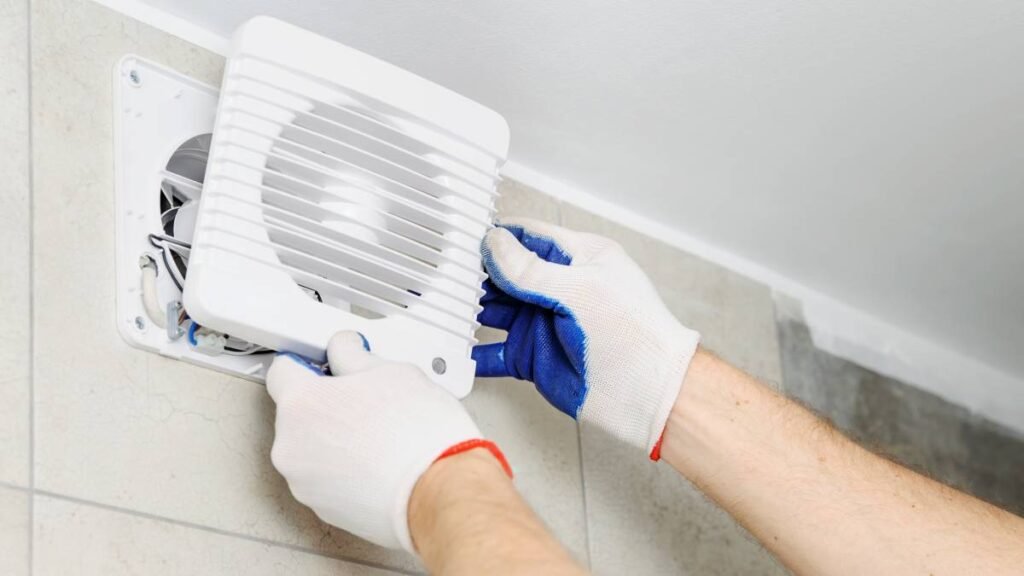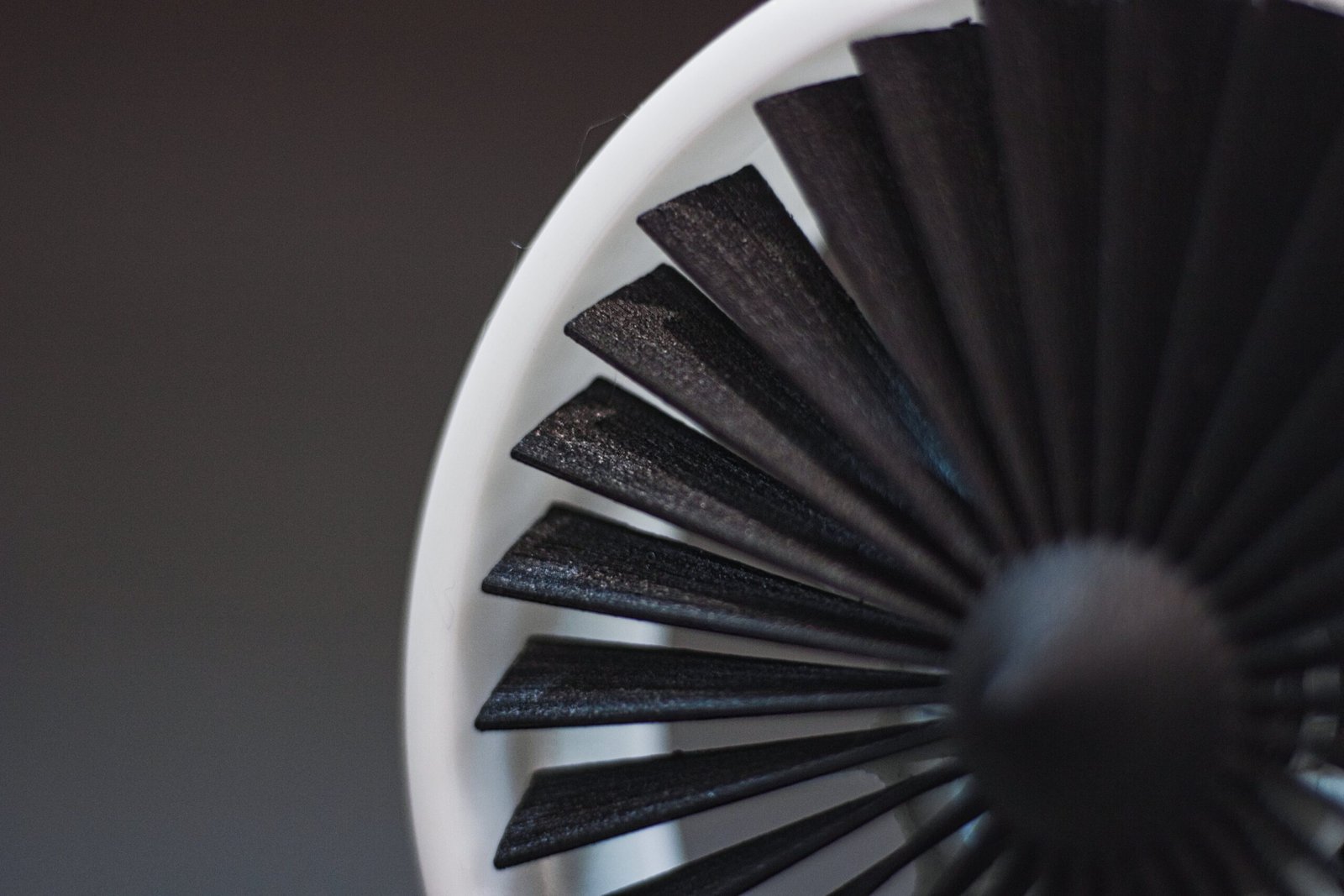In any modern home, an exhaust fan plays a crucial role in maintaining indoor air quality. Whether it’s installed in the kitchen to vent cooking fumes or in the bathroom to remove moisture, a well-functioning exhaust fan is essential. However, many homeowners encounter issues where the fan’s airflow weakens over time, leading to ineffective ventilation. Poor airflow or weak suction in an exhaust fan is not just a minor inconvenience; it can lead to a host of problems, including increased humidity, persistent odors, and even mold growth.
This guide will walk you through the common causes of poor airflow or weak suction in exhaust fans, provide practical solutions, and offer tips for preventative maintenance to keep your exhaust fan running efficiently. Whether you’re a DIY enthusiast or a homeowner looking to understand the basics, this article will help you ensure that your exhaust fan performs at its best.
Understanding the Importance of Proper Exhaust Fan Functionality
Before diving into the troubleshooting process, it’s essential to understand why a properly functioning exhaust fan is so important. Exhaust fans are designed to remove stale air, moisture, and contaminants from a room, replacing it with fresh air. In areas like kitchens and bathrooms, where humidity and odors are common, exhaust fans help maintain a healthy indoor environment by preventing mold growth, reducing condensation, and eliminating unpleasant smells.
When an exhaust fan fails to perform optimally, the consequences can be significant. Increased humidity can lead to mold and mildew, which not only damages your property but also poses health risks. Poor air circulation can result in lingering odors and a buildup of harmful airborne particles. Therefore, addressing issues like weak suction or poor airflow is vital for both your home’s integrity and your family’s well-being.
Common Causes of Poor Airflow or Weak Suction
Identifying the root cause of poor airflow or weak suction in an exhaust fan is the first step toward finding a solution. Below are some of the most common reasons your exhaust fan might not be working as effectively as it should.
Dirty or Clogged Filters
One of the most frequent causes of poor airflow in exhaust fans is dirty or clogged filters. Over time, dust, grease, and debris accumulate in the fan’s filters, obstructing the airflow. This is particularly common in kitchen exhaust fans, where cooking oils and smoke particles can quickly build up.
Solution: Regular cleaning or replacement of filters is crucial to maintaining optimal airflow. For kitchen exhaust fans, clean the filters at least once a month with warm, soapy water or a specialized degreasing agent. For bathroom fans, inspect the filters every few months and clean or replace them as needed. A clean filter ensures that air can pass through freely, allowing the fan to operate efficiently.
Blocked Ductwork
The ductwork connected to your exhaust fan is responsible for carrying the air out of your home. If these ducts become blocked or restricted, the airflow will be significantly reduced, leading to weak suction. Common causes of ductwork blockages include accumulated dust, debris, bird nests, or even insects and sometime bad ductwork.
Solution: To resolve this issue, inspect the ductwork for any visible obstructions. If you find any blockages, remove them carefully. In cases where the ductwork is extensive or hard to access, it may be necessary to hire a professional duct cleaning service. Regular maintenance of the ductwork will prevent future blockages and ensure that your exhaust fan operates efficiently.
Incorrect Fan Size
Another common reason for poor airflow is the installation of an exhaust fan that is too small for the room it’s meant to ventilate. A fan that is undersized will struggle to remove air effectively, leading to weak suction.
Solution: To determine if your exhaust fan is the correct size, you need to calculate the room’s size and compare it to the fan’s capacity. Exhaust fan capacity is typically measured in cubic feet per minute (CFM). A good rule of thumb is to have 1 CFM per square foot of room area for bathrooms. For kitchens, the recommended capacity might be higher, depending on the cooking appliances used. If your fan is undersized, consider upgrading to a more powerful model that matches your room’s requirements.
Improper Installation
Even the best exhaust fan will perform poorly if it’s not installed correctly. Improper installation can lead to misaligned ductwork, gaps in the connections, or insufficient sealing, all of which can reduce airflow.
Solution: If you suspect that improper installation is the cause of weak suction, it may be necessary to inspect the installation or have a professional do so. Check for gaps where air could be leaking out of the ductwork or where the fan is not properly aligned with the ducts. Proper sealing and alignment are critical for ensuring that the fan can effectively move air out of the room.
Worn Out or Damaged Fan Motor
Like any mechanical device, the motor in your exhaust fan can wear out over time. A motor that is aging or damaged will struggle to maintain the necessary speed to generate adequate airflow, resulting in weak suction.
Solution: If the fan motor is the issue, you may notice unusual noises such as grinding or humming, or the fan may run at a lower speed than usual. In such cases, replacing the motor or the entire fan unit may be necessary. Regular maintenance and lubrication can help extend the life of the motor, but eventually, it may need to be replaced to restore full functionality.

Diagnosing the Issue: Step-by-Step Guide
Once you’re aware of the potential causes, diagnosing the specific issue with your exhaust fan becomes more manageable. Here’s a step-by-step guide to help you pinpoint the problem.
Conduct a Visual Inspection
Start by visually inspecting the exhaust fan and its components. Look for obvious issues such as dirt buildup on the filters, blockages in the ductwork, or signs of wear and tear on the fan blades and motor. Also, check the exterior vent where the air exits your home. If this vent is blocked or partially closed, it can cause airflow issues.
Listen for Unusual Noises
Exhaust fans should operate relatively quietly. If you hear grinding, rattling, or humming noises, this could indicate a problem with the motor or fan blades. These noises often suggest that the motor is struggling to operate or that something is obstructing the fan’s movement.
Test the Airflow
To test the exhaust fan’s airflow, you can use a simple method involving a piece of tissue or a smoke pencil. Hold the tissue or smoke pencil near the fan while it’s running. If the fan is working correctly, the tissue should be pulled toward the fan, or the smoke should be drawn into the vent. Weak suction will result in little to no movement of the tissue or smoke.
Check the Ductwork
If the airflow test indicates a problem, the next step is to inspect the ductwork. Remove any accessible sections and look for blockages, kinks, or poorly connected joints. Even small obstructions or gaps can significantly reduce airflow.
Seek Professional Help if Necessary
If you’ve gone through these steps and are still experiencing poor airflow, it may be time to call in a professional. A licensed HVAC technician can perform a more thorough inspection, including checking for less obvious issues like improper duct sizing or more severe motor problems.
Preventative Maintenance Tips for Long-Lasting Performance
To avoid issues like weak suction and poor airflow in the future, regular maintenance of your exhaust fan is essential. Here are some preventative measures you can take to keep your fan in top condition.
Regular Cleaning
Cleaning the exhaust fan regularly is one of the simplest and most effective ways to maintain proper airflow. For kitchen exhaust fans, clean the filters monthly to remove grease and food particles. Bathroom fans should have their grills and filters cleaned every few months to prevent dust buildup.
Routine Inspections
Perform routine inspections of both the fan and the ductwork to catch any potential issues early. Look for signs of wear, such as frayed wiring, loose connections, or rust on the fan blades. Regular inspections will help you address small problems before they turn into major issues.
Replace Old Fans
If your exhaust fan is more than 10-15 years old, it may be time to consider a replacement. Newer models are more energy-efficient and effective at moving air, and they come with improved features like quieter operation and better filtration.
Check the Exterior Vent
The exterior vent where the air exits your home should also be part of your regular maintenance routine. Ensure that it is free of obstructions like leaves, dirt, or snow, and that the vent flap opens and closes properly.
Consider Upgrading Ductwork
If your home’s ductwork is outdated or improperly sized, upgrading it can significantly improve your exhaust fan’s performance. Properly sized and sealed ductwork will allow air to flow more efficiently, reducing strain on the fan and improving overall ventilation.
Conclusion
Weak suction or poor airflow in an exhaust fan is a common issue that can be caused by a variety of factors, from dirty filters and blocked ductwork to improper installation and worn-out motors. By understanding the common causes and following the steps outlined in this guide, you can diagnose and resolve these issues, ensuring that your exhaust fan operates efficiently and effectively.
Remember, regular maintenance is key to preventing future problems. By cleaning your fan regularly, performing routine inspections, and upgrading components when necessary, you can keep your exhaust fan in top condition for years to come.
Don’t let a weak exhaust fan compromise your home’s comfort and safety. Contact Electrician Lincoln NE today for reliable and efficient service that keeps your exhaust fans performing at their best.
FAQs
What are the signs that my exhaust fan needs to be replaced rather than repaired?
Some signs that indicate your exhaust fan might need replacement include:
Persistent Noises: If your fan is making unusual noises despite cleaning and maintenance, it may indicate that the motor or other components are beyond repair.
Inefficient Performance: If the fan no longer effectively removes air or is struggling to maintain suction, even after addressing common issues like dirty filters or blockages.
Frequent Breakdowns: If the fan requires constant repairs or parts replacements, it may be more cost-effective to invest in a new unit.
Age of the Fan: Exhaust fans typically have a lifespan of 10-15 years. If your fan is older and showing signs of wear, replacing it with a new, more efficient model may be a better option.
Can I install an exhaust fan myself, or should I hire a professional?
While installing an exhaust fan yourself is possible, it’s important to consider the following factors:
Complexity of Installation: If the installation requires extensive ductwork, electrical work, or structural modifications, hiring a professional is recommended to ensure proper installation and adherence to building codes.
Experience and Tools: If you have experience with home improvement projects and the necessary tools, a DIY installation might be feasible for simpler setups.
Safety: Proper installation is crucial for safety and efficiency. A professional can ensure that the fan is correctly installed and that all electrical and ventilation requirements are met.
How do I know if my exhaust fan is properly sized for my room?
To determine if your exhaust fan is properly sized for your room, you need to calculate the required airflow capacity in cubic feet per minute (CFM). Here’s a simple method:
Measure the Room: Calculate the room’s volume by multiplying its length, width, and height.
Use the CFM Formula: For bathrooms, the recommended CFM is roughly 1 CFM per square foot of floor area. For kitchens, the CFM requirement may be higher due to cooking activities.
Check Manufacturer Specifications: Compare your fan’s CFM rating with the required CFM based on room size and usage. If your fan’s capacity is lower than needed, consider upgrading to a more powerful model.
How often should I clean the exhaust fan’s ductwork?
The frequency of cleaning the exhaust fan’s ductwork depends on several factors:
Usage: For fans used in kitchens, where grease and food particles accumulate, ductwork should be cleaned every 6-12 months. For bathroom fans, a cleaning interval of 1-2 years is typically sufficient.
Environment: If you live in an area with high dust levels or if the fan experiences heavy usage, more frequent cleaning may be necessary.
Professional Cleaning: For thorough cleaning, especially in extensive or hard-to-reach duct systems, consider hiring a professional duct cleaning service.
Can an exhaust fan help with reducing humidity in my home?
Yes, an exhaust fan can help reduce humidity in specific areas, such as bathrooms and kitchens, by removing moist air and improving ventilation. However, it’s important to note:
Localized Effect: Exhaust fans are effective at reducing humidity in the room where they are installed but may not significantly impact overall home humidity levels.
Whole-House Humidity Control: For comprehensive humidity control throughout the home, consider using a whole-house dehumidifier or improving overall ventilation and insulation.

